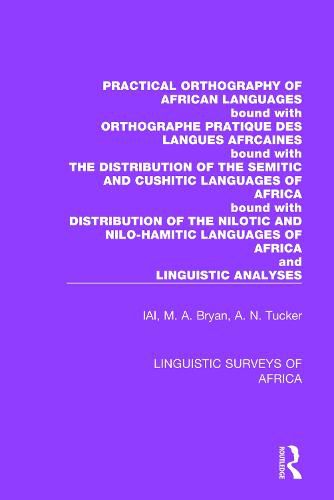Readings Newsletter
Become a Readings Member to make your shopping experience even easier.
Sign in or sign up for free!
You’re not far away from qualifying for FREE standard shipping within Australia
You’ve qualified for FREE standard shipping within Australia
The cart is loading…






The first edition of the Practical Orthography of African Languages was a best-seller and this and the following volume re-issues the second edition, in English and French. Originally published in 1930, it provided an invaluable solution to the problem of finding a practical and uniform method of writing African languages. The volume is bound with a small pamphlet which analyses the information on the Semitic and cushitic languages of Eritrea, Ethiopia and the Anglo-Egyptian Sudan. Related languages are grouped together into larger sections which have some linguistic significance. A further pamphlet, the Distribution of the Nilotic and Nilo-Hamitic Languages of Africa, describes the relationship between languages and dialects. For each language, data are given on locality, number of speakers, use for educational and religious purposes and the extent of vernacular literature. The linguistic material is set out in phonetic script with tone marks, though reference is made to current standard orthoraphies where these exist.
$9.00 standard shipping within Australia
FREE standard shipping within Australia for orders over $100.00
Express & International shipping calculated at checkout
The first edition of the Practical Orthography of African Languages was a best-seller and this and the following volume re-issues the second edition, in English and French. Originally published in 1930, it provided an invaluable solution to the problem of finding a practical and uniform method of writing African languages. The volume is bound with a small pamphlet which analyses the information on the Semitic and cushitic languages of Eritrea, Ethiopia and the Anglo-Egyptian Sudan. Related languages are grouped together into larger sections which have some linguistic significance. A further pamphlet, the Distribution of the Nilotic and Nilo-Hamitic Languages of Africa, describes the relationship between languages and dialects. For each language, data are given on locality, number of speakers, use for educational and religious purposes and the extent of vernacular literature. The linguistic material is set out in phonetic script with tone marks, though reference is made to current standard orthoraphies where these exist.